Pioneer Bay seagrass meadow after the rain event 1st to 6th July 2022.
I measured 169mm rain in my gauge at Grace Ave Cannonvale. We tend to get less than the area as a whole so it was a significant fall.
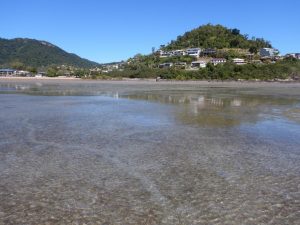
Plenty of dugong feeding trails, mostly to the eastern side of the Pigeon Island spit, as the inshore western side has been covered in clots of silt.
The area marked out in red is extremely fine, freshly settled silt. It covers the seagrass, blocks the light and can kill the plants underneath.
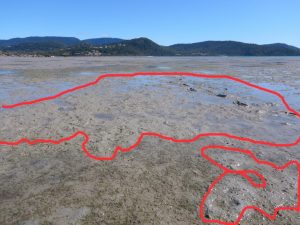
This area was muddy sand with seagrass growing on it before cyclone Debbie. After cyclone Debbie in March 2017, this area was firm muddy sand; you could walk on it and barely sink at all. The mud was been remobilised in the cyclone and all went somewhere, no doubt affecting turbidity. Now it is deep silt again after just 5 years, with very little seagrass cover to stabilise it. The depth of the footprints gives an idea of how much mud is deposited close to shore. This will be remobilised by the next cyclone and will affect inshore water quality.
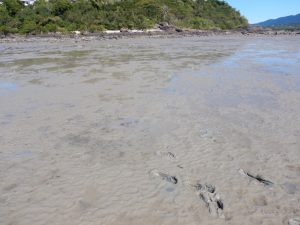
This shingley zone between the seagrass meadow and the beach was totally exposed after cyclone Debbie. Since then it has gradually disappeared under a blanket of silt.
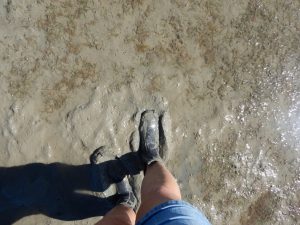
The depth of the silt can be seen by my footprints. Underneath are stone shingles. I walk through here at least twice a year to get to the seagrass monitoring sites. It is now deep enough to overtop my wetsuit boots. The mud here has never been that deep before.
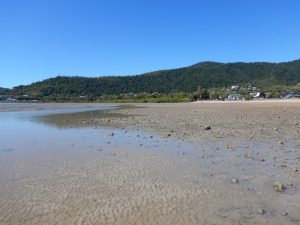
This is freshly arrived silt after the last rain event, settled on the shingles.
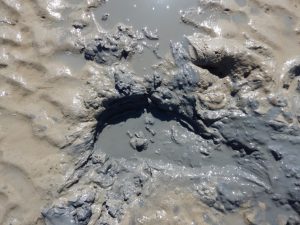
You can see the stones in the bottom of my footprint. These have been buried in just 5 years.
If we continue to allow poor erosion control and leave bare soil exposed on development sites, this process will continue, impacting the health of seagrasses, corals and the entire inshore ecosystem. If we overwhelm the ability of the seagrasses to cope with the influx of sediment, we lose the ecosystem services that they provide. This will worsen our water quality problems, as seagrasses are critical filters, stabilising sediment and removing nutrients.
When we lose or degrade the seagrass habitat, we lose a biodiverse carbon sink that is also a nursery for seafood species from fish to crabs and prawns and critical feeding habitat for migratory birds, turtles and dugongs.
A good Reef Guardian Council should be working to minimise this loss of sediment. Members of the community can see the recreational land clearing on private land with zero erosion controls, and the building sites scraped bare of all vegetation, with poor, unmaintained or token efforts at controlling erosion. We can see the silted creeks and the muddy flood plumes whenever we get a heavy fall of rain. This is an endless chronic impact on an important community resource which supports recreation, tourism and the health of inshore waterways.
We must find a way to do better. 